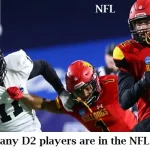Basque Pelota is a handball-type game that is played in the Basque region of Spain. It’s popular among the Basque people and can be traced back to Medieval times. The game was originally played on dirt courts called “pelota squares” but has since evolved into an indoor sport. There are two teams, each consisting of three players. The game involves striking a ball with a club or racquet and running towards the opposite goal. it is an international sport that starts with B.
The popularity of Pelota has been increasing in the United States. Each year, the National Pelota League has more than 2,000 teams.
History of Basque Pelota
There is a popular belief that Barcelona will not allow Lionel Messi to leave the club. This was a rather silly story, and I would like to ask that question: Barcelona signed Neymar for €222 million.
Some short information about Basque Pelota
A short history of the Pelota is given below.
Highest Governing Body: International Federation of Basque Pelota
Nicknames: Pelota
First played: the 13th century
Contact: No
Team Members: Single or doubles
Equipment: Basque Ball Pelota
Type: Racquet sport, Hand Sport, and Basket sport
Olympic: Part of the Summer Olympic package in 1900 Demonstrated at 1924, 1968, and 1992 Summer Olympics Documented as an Olympic sport.
Rules of Basque Pelota
Basque Pelota is a traditional sport with various versions and playing styles. Here are the short rules that encompass the basic principles of Basque Pelota:
- Players: Basque Pelota can be played in singles (one against one) or doubles (two against two) format. Each player or team aims to score points against their opponents.
- Ball and Equipment: The game is played with a hard rubber ball, often called a pelota. Players use their hands, a wooden racket (pala), a wicker glove (cesta punta), or a paddle (pala corta) to hit the ball against a wall or to each other.
- Court: The playing area is typically a long rectangular court with a front wall and side walls. The specific dimensions and materials used can vary depending on the version of Basque Pelota being played.
- Serving and Scoring: The game begins with a serve, where one player or team hits the ball against the front wall to initiate play. The ball must then be returned before it bounces twice. Points are scored when the opposing player or team fails to return the ball legally.
- Scoring Methods: The scoring system can differ depending on the version of Basque Pelota being played. Some common scoring methods include points awarded for the ball bouncing twice before being returned, points given for balls hit out of bounds or hitting designated target areas on the wall, or a rally-based scoring system where players score points only when they are serving.
- Faults and Fouls: Various faults and fouls may result in the loss of points or a turn for the offending player or team. These can include failing to return the ball legally, hitting the ball out of bounds, interfering with an opponent’s shot, or committing other rule infractions specific to the version being played.
The rules provided above are a general overview and may not encompass the specific rules and intricacies of each version of the sport.
Equipment of the sports
Here’s a short list of equipment used in Basque Pelota:
- Pelota: The pelota is a hard rubber ball used in Basque Pelota. It comes in different sizes and hardness levels depending on the specific version of the sport being played.
- Pala: The pala is a wooden racket used in certain variations of Basque Pelota. It has a flat hitting surface and a handle for players to grip.
- Cesta Punta: Cesta punta is a variation of Basque Pelota played with a wicker glove or cesta. The Cesta is used to catch and throw the ball against the wall or to opponents.
- Paddle (Pala Corta): In some forms of Basque Pelota, a paddle or pala corta is used. It is a solid wooden paddle with a handle, providing players with a solid hitting surface.
- Court: Basque Pelota is played on a specific court or fronton. The court is typically a long rectangular area with a front wall and side walls made of materials like concrete, wood, or stone.
- Protective Gear (Optional): Depending on the version and level of play, players may choose to wear protective gear such as gloves, knee pads, or eyewear for added safety.
The specific equipment used may vary depending on the version and regional variations of the sport.
In conclusion
The United States built its first fronton in Miami in 1924. To play sports, we use gloves and balls. Generally, it is used in Spain for Remonte.
Read also more sports
banger racing
and more.










